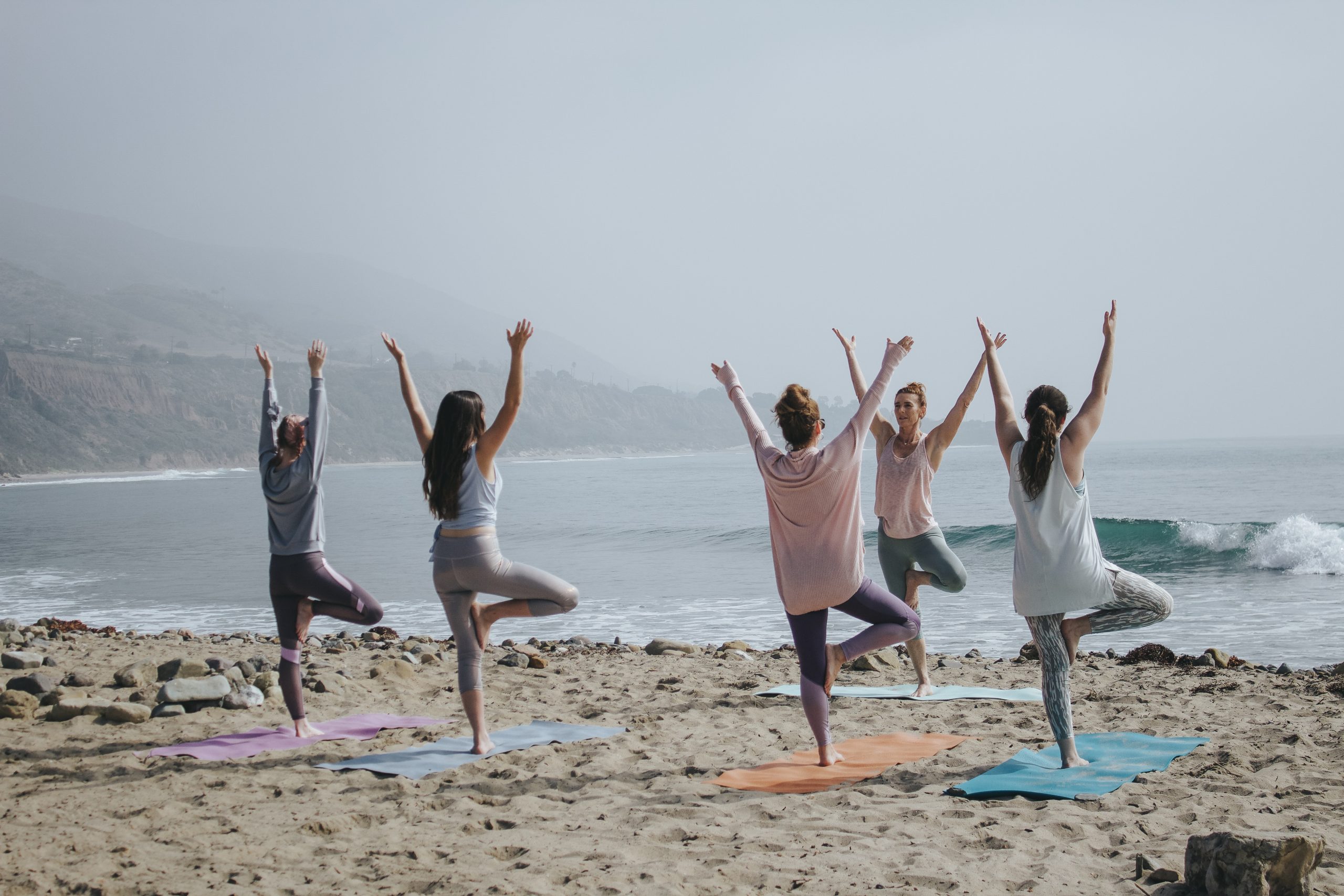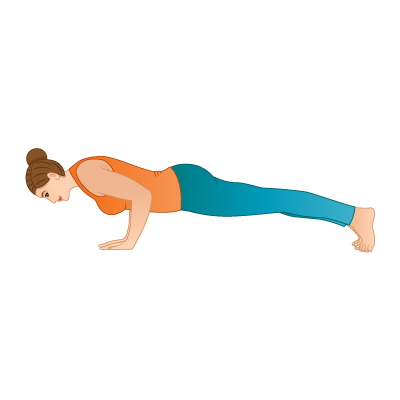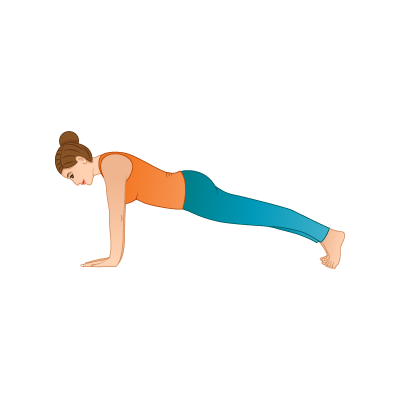How to Teach Yoga to Beginners: Yoga Class Pose and Sequence Ideas
October 16, 2023 | 10 min read
To teach means to impart or transfer knowledge, ideas, or skills to another person. This is why we as yoga teachers have to practice regularly, explore the ancient wisdom of yoga, and advance our yoga-related skills. Teaching a yoga class to beginners, although it might sound easy, is often more challenging than teaching someone who has been practicing for years.
The Sanskrit term for “teacher” is Guru. The term comes from Upanishad and it consists of two syllables: “gu” which means “shadows” and “ru” which means “he who disperses them”. We could say that a teacher also is someone who can bring light to the darkness.
This is why our experience as teachers is of the utmost value – it is impossible to show a path without having walked it before. We as yoga teachers can truly give only our own experience. We at Yoga Class Plan want to inspire you to never stop learning and remember to follow the ethical guidelines both from the yoga philosophy (e.g. Patanjali’s Yoga Sutras) and the Yoga Alliance’s code of conduct.
In this article, we share yoga class poses and yoga sequence ideas, as well as tips and tricks on how to teach a yoga class to beginners.
Yoga Class Preparation: What to Think About
Class preparation depends on the group of students you are teaching. Every class is an opportunity to create an experience of yoga discovery. We should strive for our students to make connections among various elements of the yoga practice: alignment principles, breath patterns, different structures of a class, or clearer awareness in general.
When you teach a yoga class to beginners, you should remind yourself of the following.
1. Teacher and class introductions
When someone is trying something new, they indulge themselves in the unknown. This might be a source of anxiety for some people. Try to remember your first yoga classes. New people in your class might wonder what they have gotten themselves into by trying yoga. The anxiety and tension can be alleviated at the start of the class by a simple explanation of what your students can expect.
You can introduce yourself as students settle on their mats at the start of class. You can quickly let them know about your own yoga experience and education, as well as about the class(es) you teach.
In the beginners’ class, it is good to explain the structure of the class and the yoga sequences you will guide them through. Explain why we do warm-ups and stretches, how seated and standing positions might affect their bodies, and why we need to cool down and relax and rest at the end.
2. Yoga’s basic principles incorporated
It is always wise to choose something that resonates with your own yogic sensibilities and your skills. There are a lot of options and possibilities to incorporate basic principles that help to provide a safe and sustainable class.
You could put focus on a specific group of yoga poses or asanas (back bends, twists…) and explore how different elements of the various asana families work together. Or you can focus on a specific action in the body such as different movements of the spine, or external/internal rotation of the thighs.
Yoga Class Introduction: What to Do Before Class Starts
We are living examples of what we teach. The wisdom of Yamas and Niyamas helps us to become better human beings. We should always greet our students before the class and ask them how they are. If there are new students in the studio, ask them about their experience and practice. This should be a great source of knowledge for us.
3. Tune in and create an inner space for practice
It is also great to allow your students to tune in from the inside by creating an inner space for practice. We can do this by starting the class with a few minutes of sitting in Virasana, short coherent breathing or pranayama practice, short guided meditation, or an active Mountain pose (Tadasana) that helps students to link better with their body, breath, and mind.
Yoga Class Tips: Where to Guide Students’ Attention
4. Breath, breath, breath
Breath, especially in Ashtanga, Vinyasa, and related practices, is the master. We should remind our yoga beginner students that the focus should always be on the movement of the breath. Everything else in our practice should be a consequence of the movement of the breath. “Vinyasa” can be described as a marriage between the breath and the movement – without it, we are not creating yoga or union.
The awareness of the breath and its importance in the quality of our daily life is one of the most essential experiences one can take back home from a yoga class. The ability to return the awareness to the breath in any moment is built step by step and your students should be reminded about it (almost) every class. Explain the relevance of the breath to the practice from both physical and philosophical perspectives. Help them to shift from shallow breathing to belly breathing.
In my experience, starting a class with 6-10 mins of resonant or coherent breathing practice provides an excellent foundation and prepares students for breathing throughout the class. If you are looking for an app to assist you with this, I’d recommend The Breathing App from my dear teacher Eddie Stern. The app is simple and free to use, covering everything you need for your personal practice or class teaching.
For new students and yoga beginners, the first true connection between mind and body is usually during breath or pranayama practice.
5. Teach basic asanas but…
In a yoga class for beginners, we should start with something simple. Sun salutation A & Sun salutation B (Surya Namaskar A & B) with the addition of closing yoga postures (asanas) might be enough for someone in their first yoga class. Remind your students that they are always welcome to enter the child’s pose (Balasana) to return their focus on breathing and resting their bodies.
Teach the staple yoga poses first. Sun salutations are followed by asanas such as a standing forward bend (padangustasana, padahastasana), triangle pose (trikonasana), extended side angle (utthita parsvakonasana), and wide legged forward bend (prasarita padottanasana). These are easily followed by Warrior I, Warrior II, Warrior III, and Reverse Warrior poses.
But… Search for the opportunity to introduce your students to some more challenging yoga poses. Mind that “challenging” to beginners is a much different term than it is for you. Guide them to the Child’s pose a few times throughout the class. Surprise them with a Legs Up the Wall pose, or help them relax with the Supine Spinal Twist pose.
6. Keep it simple, go slow, and assume nothing
As your group of students progresses in practice and you start to add new asanas, it is important to avoid improvising and to try everything on yourself before the class. It is important to study and properly plan your sequences. Prepare a yoga class plan with all the details for each yoga posture, every single movement, and every single breath.
Our yoga sequencing app Yoga Class Plan was developed to help you with class inspiration and preparation. I would like to thank my teachers Petra and Marco Bianco from the Pink Elephant Yoga House for the valuable wisdom and teachings shared with me during our yoga teacher training.
Be mindful of your teaching style – if you talk in a hurried fashion or act rushed, your students will surely pick up on that. They can feel your tension and it might become a part of their practice, too. Remember to breathe with your students and allow them time to explore poses and your cues in their bodies. Slow down and focus on breathing.
7. Invite questions
There are two options for questions – you can invite them before or after the class, or during the class. This depends on you, your teaching style, and your students. Beginners have lots of questions and it might be good to let students know they are free to ask questions anytime during the class.
Students’ questions will give you more insights about where to focus your teaching, as well as reduce the risk of their injury because you probably don’t have much insight into their abilities, injuries, and past experiences who is new to yoga or your class. Their questions also help you to check that your instructions make sense, especially in some more challenging yoga poses or in yoga asanas which students aren’t completely confident about.
8. Use clear communication and be visible
Make sure your students can see and hear you when you are demonstrating yoga poses. Move around the studio when this is needed, especially since many beginners tend to shy away and place their yoga mats in the back of the room. It is important to make sure they are following along properly. Ensure your language and directions are clear. Encourage them to ask questions to confirm this. Everyone should understand the correct way to do a yoga pose in order to feel safe and comfortable.
Yoga Class Closing: Savasana and Until Next Time
Once your students enter savasana, you should let them know that they will stay in this pose for several minutes and that it will be you as a teacher to “wake” them up and help them come out of the pose. This will help them to relax, calm their mind and stop wondering how long they need to remain still.
9. Short and guided Savasana
In my experience, the savasana for beginners should be short and guided. Before savasana, I usually guide students to take a deep breath through their noses, hold the breath for a few seconds and then exhale soundly through their mouths. Repeat this three times and see how your students respond to this.
Remember that new students help us to grow as teachers as much as we help them practice yoga. Thank your students for taking part in the class, and ask them if they have any questions or topics to discuss.
Looking for more inspiration for your next yoga class? YogaClassPlan sequence builder gives you access to 7000+ shared class plans in your hands. You can create your own completely new class sequences by choosing from 500+ pose illustrations. Simply drag and drop poses to create your routine, add class plan details such as duration and level, and share the class plan with your students. Sign-up for a 15-day YogaClassPlan free trial today.
About the author:
I’m Matija, a seasoned digital marketing professional working in the industry since 2011. I hold a master’s degree in information technology, blending technical expertise with marketing finesse. I’m also a certified yoga teacher with a passion for mindfulness. I’ve been practicing yoga since 2013 and started teaching in 2022. This unique combination of skills reflects my commitment to holistic growth and helping others achieve their goals. Explore my insights on digital marketing and the transformative power of yoga in my blog posts on YogaClassPlan.
Photo by Kaylee Garrett on Unsplash
Posted in Teaching Resources, Teaching Tips




